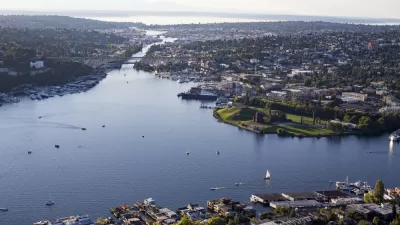If its proposals are effectively implemented, Vancouver's new housing plan would promote 'missing middle housing' and increase density near jobs and transit.

While it has taken years for Vancouver's city council to develop the framework for a plan to increase housing density and provide more affordable housing in the city, the Globe and Mail editorial board sees the recently released plan as a step in the right direction for a city where housing costs have doubled in the last decade.
The board blames Vancouver's widespread single-family zoning for the rise in housing costs and argues that pushing people farther away from jobs and services in the central city could be a hindrance to Vancouver's economic growth. Some homeowners, however, are ready to fight the city's plans to increase density in residential neighborhoods. Meanwhile, housing advocates say permitting density only on busy arterial roads, which expose residents to higher levels of pollution and noise, discriminates against low-income households.
According to the editorial, the proposal focuses on encouraging "missing middle housing" and mixed-use development, but does not yet include specific provisions for zoning changes.
More than 50 per cent of Vancouver’s land is devoted to just 15 percent of the city’s housing. The draft plan has ideas to increase development near rapid transit and shopping areas, but it is the proposal to allow more types of housing in neighbourhoods of detached single-family homes that likely will make the biggest difference in the decades ahead.
The council expects to vote on a finalized plan in mid-2022.
FULL STORY: Vancouver has a plan for the future of Canadian cities

Planetizen Federal Action Tracker
A weekly monitor of how Trump’s orders and actions are impacting planners and planning in America.

Congressman Proposes Bill to Rename DC Metro “Trump Train”
The Make Autorail Great Again Act would withhold federal funding to the system until the Washington Metropolitan Area Transit Authority (WMATA), rebrands as the Washington Metropolitan Authority for Greater Access (WMAGA).

The Simple Legislative Tool Transforming Vacant Downtowns
In California, Michigan and Georgia, an easy win is bringing dollars — and delight — back to city centers.

The States Losing Rural Delivery Rooms at an Alarming Pace
In some states, as few as 9% of rural hospitals still deliver babies. As a result, rising pre-term births, no adequate pre-term care and "harrowing" close calls are a growing reality.

The Small South Asian Republic Going all in on EVs
Thanks to one simple policy change less than five years ago, 65% of new cars in this Himalayan country are now electric.

DC Backpedals on Bike Lane Protection, Swaps Barriers for Paint
Citing aesthetic concerns, the city is removing the concrete barriers and flexposts that once separated Arizona Avenue cyclists from motor vehicles.
Urban Design for Planners 1: Software Tools
This six-course series explores essential urban design concepts using open source software and equips planners with the tools they need to participate fully in the urban design process.
Planning for Universal Design
Learn the tools for implementing Universal Design in planning regulations.
Smith Gee Studio
City of Charlotte
City of Camden Redevelopment Agency
City of Astoria
Transportation Research & Education Center (TREC) at Portland State University
US High Speed Rail Association
City of Camden Redevelopment Agency
Municipality of Princeton (NJ)





























